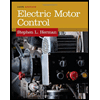
Concept explainers
Choose the correct answer among the given choices to find which is referred as a type of home automation system.
Answer to Problem 1R
The correct answer among the given choices that referred as a type of home automation system is “
Explanation of Solution
Discussion:
Option (a):
X10 technology is the oldest technology that was invented in 1975 in Scotland. X10 technology is used in the home automation systems. The patent of X10 technology expired in 1997; after that, it became an open standard technology for the manufacturers to implement in their products.
Especially, X10 home automation system is used in existing homes for retrofit wiring since it is simple, low cost, and will not require a special wiring for basic functions. It is one-way communication system. The components can be added easily to the system such as audio/video, lightening, and arming; whereas some devices can “talk” and others can “listen” and are often referred to as “plug-and-play” system. Since X10 is one type of home automation system, option (a) is correct.
Option (b):
X20 technology is an automation technology which is used effectively in the automation of machines or systems in manufacturing, but not in the home automation systems. For example, X20 automation can be used in industrial PCs. It is simple to connect and configure. This type of automation is a better choice than a remote control I/O system. Since X20 is not a type of home automation system, option (b) is incorrect.
Option (c):
HAS is one of the highly automated and powerful system which is used in production process as well as in research projects. It is a high cost automation system. Since HAS is not a type of home automation system, option (c) is incorrect.
Conclusion:
Thus, the correct answer among the given choices that is referred to as a type of home automation system is “
Want to see more full solutions like this?
Chapter 31 Solutions
EBK ELECTRICAL WIRING RESIDENTIAL
- You must have noticed that, when a major appliance is turned on (such as an AC unit, garbage disposal, etc.), your house lights dim momentarily. This is the effect of the RL circuit formed by the inductance and resistance of the transmission line and the loads (light bulbs, appliance, etc.) In fact, even a single straight wire has inductance. The inductance (and the resistance) of a long transmission line can be problematic if the system is not properly designed. The voltage on a power transmission line is alternating current but the effect of transmission line can be simulated by a DC circuit as shown below, where R=0.005 2 /km and L=0.04 H/km representing the resistance and inductance of the transmission line per km relationship that is with the ration: L-8 R. In the circuit, Right =160 represents light bulb resistances, R₁ = 7 represents the resistance of a 'major appliance', and the switch indicates when the appliance is turn on. Alice, a newly hired engineer, needs to determine…arrow_forwardFor the circuit shown, let Let R₁-3 ohms, R2-7 ohms, C₁-2 F, VX-20 V and Ix-1 A. Calculate the capacitor voltages, as shows, at time t= (-1.3) sec and at t=1.9 sec. In particular find: V(0) = V(∞) = Rth V(t=-1.3 sec) in volts- V(t-1.9 sec) in volts- C1 HH +V(t) = - (V) (V) (S2) (V) 3 (V) Vx +1 R1 t=0 The relative tolerance for this problem is 9 %. R₂arrow_forwardIn the circuit below, the switch moves from position 1 to position 2 at t=0. Select the closest waveform which represents the inductor current: 2 R 2R V₁ t=0 0 t=0 (a) (d) t=0 (b) (e) 0 0 t=0 (c) t=0 요 (f) Note: choices are listed randomly; may not alphabetically ordered. (given during job interview question, with permission) waveform c waveform a O waveform d waveform e waveform b ○ waveform f t=0 Rarrow_forward
- Let R1-8 ohms, R₂-5 ohms, L₁-2 H, Vx=10 V, in the circuit shown, to calculate the inductor current at time t= (0.6 sec) and at t= 2 sec, as follows: i(0) = 1(00) - Rth= = i(0.6 sec) = i(2 sec) = R₁ (A) (A) (N) Vx 1=0 The relative tolerance for this problem is 9 %. (A) (A) R2 ell 4₁arrow_forwardThe following circuit is at steady state for t<0. At t=0 sec, the switch opens. Let R₁=102, R₂-12 2, R3=6 2, R4-6, C=0.9 F and V₂-14 V, and find V(t) at t =2.206 sec, as follows: V(0) = (V) V(∞0) = RTh = V(2.206) = (V) (Ω) (V) {To avoid errors, and meet allowed tolerance, carry-out your intermediate numerical values as much as possible than round only the entered values to 3 significant digits} R₁ w V (+ R₂ ww + C EV(t) R3 The relative tolerance for this problem is 10 %. Question Help: Written Example I R4 www 2=0arrow_forwardPM Mon Apr 14 la800803.us.archive.org Chapter 5 Problems 199 5-8 5-9 carry generator of Fig. 5-5. Derive the two-level Boolean expression for the output carry Cs shown in the look-ahead How many unused input combinations are there in a BCD adder? 5-10 Design a combinational circuit that generated the 9's complement of a BCD digit. 5-11 Construct a 4-digit BCD adder-subtractor using four BCD adders, as shown in Fig. 5-6, and four 9's complement circuits from Problem 5-10. Use block diagrams for each compo- nent, showing only inputs and outputs. 5-12 It is necessary to design a decimal adder for two digits represented in the excess-3 code. Show that the correction after adding the two digits with a 4-bit binary adder is as fol- lows: (a) The output carry is equal to the carry from the binary adder. = (b) If the output carry 1, then add 0011. (c) If the output carry = 0, then add 1101. Construct the decimal adder with two 4-bit adders and an inverter. 5-13 Design a combinational circuit…arrow_forward
- For the circuit shown, assume the initial capacitor voltage is V(0-) = -8 V. Then at t=0, the switch closes. Find the time at which Vc(t)-8 V. Let R₁-12 S2, C1-8 F and V₂-16 V The voltage Vc(∞ )= Time-constant T= The time at which Vc(t)-8 V ist = (V) (sec) (sec) + R1 C₁ + Vct) The relative tolerance for this problem is 10 %.arrow_forward13. Find i(t) for t > 0 in the following circuitarrow_forwardCalculate the Capacitor Voltage for t > 0 assuming the switch has been open for long time.arrow_forward
- 14. Find i(t) for t > 0 in the following circuit Note: the current source is only ON for t > 0. So, it would be an open circuit for t < 0arrow_forward10. Find v(t) for t > 0 in the following circuit. Note: the current source is only ON for t > 0. So, it would be an open circuit for t < 0arrow_forward3. Calculate the Capacitor Voltage for the t 0 for the following circuit. 302 292 12 V 4 V 3 F 2arrow_forward
